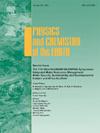水中细菌污染物对人体健康的危害、检测和生物修复研究进展
IF 3
3区 地球科学
Q2 GEOSCIENCES, MULTIDISCIPLINARY
引用次数: 0
摘要
在世界范围内,饮用水中的细菌污染是人类健康的一个主要问题。大肠杆菌、沙门氏菌、弯曲杆菌和嗜肺军团菌等细菌感染可导致严重疾病,它们在水生环境中迅速繁殖的倾向增加了风险。包括儿童和老人在内的弱势群体特别容易感染水传播疾病。具有致病性的细菌繁殖迅速,这将增加人类健康的风险。除此之外,许多细菌病原体产生对健康有负面影响,导致严重疾病,器官损伤,甚至导致人类死亡。检测和消毒技术的进步,包括定量微生物风险评估(QMRA)、宏基因组学和分子诊断方法,促进了病原体监测。膜过滤、高级氧化处理和生物修复等控制技术提供了可行的选择。本文综述了水中细菌病原体的进入和生存过程、相关的健康风险以及微生物治理方面的新技术突破。通过微生物生物修复技术,本研究提供了对水中细菌污染的全面了解,并为政策制定者、水管理当局和公共卫生专家提供了有用的见解。因此,制定水污染物的快速检测和控制战略可能导致需要采取协调一致的措施,以保护水质,以解决公众健康问题。本文章由计算机程序翻译,如有差异,请以英文原文为准。

Advancements in human health risk, detection and bioremediation of bacterial contaminants in water: A review
Worldwide, the bacterial pollution in drinking water constitutes a major concern to human health. Bacterial infections by Escherichia coli, Salmonella spp., Campylobacter spp., and Legionella pneumophila, can cause serious diseases, and their propensity to multiply swiftly in aquatic environments amplifies the risk. The vulnerable populations, including children and the elderly, are particularly prone to waterborne illnesses. Bacteria having pathogenic potential reproduce rapidly and this will increase risk of human health. In addition to this, many bacterial pathogens produce that have negative health effects resulting in severe illness, organ damage, and even lead to the death of a human being. The advances in detection and disinfection technologies, including quantitative microbial risk assessment (QMRA), metagenomics, and molecular diagnostic approaches, have boosted pathogen surveillance. Control techniques, such as membrane filtration, advanced oxidation processes, and bioremediation, offer viable options. This review addresses the entry and survival processes of bacterial pathogens in water, related health risks, and new technological breakthroughs in microbial abatement. Through microbial bioremediation technology, this study delives a comprehensive understanding of bacterial contamination in water and offers useful insights for policymakers, water management authorities, and public health specialists. Therefore, the development of a rapid detection and control strategy for water contaminants might lead to the necessity of coordinated measures to protect water quality for public health concerns.
求助全文
通过发布文献求助,成功后即可免费获取论文全文。
去求助
来源期刊

Physics and Chemistry of the Earth
地学-地球科学综合
CiteScore
5.40
自引率
2.70%
发文量
176
审稿时长
31.6 weeks
期刊介绍:
Physics and Chemistry of the Earth is an international interdisciplinary journal for the rapid publication of collections of refereed communications in separate thematic issues, either stemming from scientific meetings, or, especially compiled for the occasion. There is no restriction on the length of articles published in the journal. Physics and Chemistry of the Earth incorporates the separate Parts A, B and C which existed until the end of 2001.
Please note: the Editors are unable to consider submissions that are not invited or linked to a thematic issue. Please do not submit unsolicited papers.
The journal covers the following subject areas:
-Solid Earth and Geodesy:
(geology, geochemistry, tectonophysics, seismology, volcanology, palaeomagnetism and rock magnetism, electromagnetism and potential fields, marine and environmental geosciences as well as geodesy).
-Hydrology, Oceans and Atmosphere:
(hydrology and water resources research, engineering and management, oceanography and oceanic chemistry, shelf, sea, lake and river sciences, meteorology and atmospheric sciences incl. chemistry as well as climatology and glaciology).
-Solar-Terrestrial and Planetary Science:
(solar, heliospheric and solar-planetary sciences, geology, geophysics and atmospheric sciences of planets, satellites and small bodies as well as cosmochemistry and exobiology).
 求助内容:
求助内容: 应助结果提醒方式:
应助结果提醒方式:


